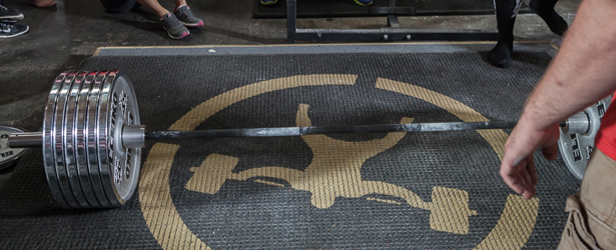
Have you ever been a few weeks into a training cycle and, after countless times of repeating the same coaching cues and making corrections, you find one or two athletes who somehow are still doing a movement incorrectly? How is this possible? Did they not listen to the coaching, or did you miss it? Early in my career, I found myself in this situation on a number of occasions and decided I had to find a solution.
As an intern, I was fortunate enough to learn from a great strength coach—Frank Wintrich. Frank is currently the director of football performance at the University of North Texas. When I observed him coach, I was in awe of the image that he created. It appeared that he was in command of the entire room of athletes and knew where everyone was and what they were doing at all times. Then, when I stepped back from the one athlete I was devoting 100 percent of my attention to, I realized that this wasn't just an image. Despite all the moving parts, he really did have command of the entire room, and I wondered how this was possible.
It wasn’t until the second time he yelled at me that I began to understand how he made the image a reality. “Marc, how many times do I have to tell you? If you want to help me, don’t stand in one place. Keep moving and coach the floor!”
With Coach Wintrich in my ear, I learned that by constantly moving and putting some thought into the set up of a training session, you can maximize your coaching efficiency. It’s all in the set up. Platform assignments are a great way to bring order to your training session, allowing you to know who is where and what issues may be present at each platform. You can anticipate accomplishments and failures and avoid training pitfalls. In my experience, I’ve found that the most effective way to organize your platform assignments is to match people of similar ability together on the same platform. This can be based on training age, technical proficiency, or strength levels.
Once a system is in place that fits your particular situation, it is essential to constantly scan the training floor and give feedback to your athletes on every rep, whether it’s negative or positive. This lets the athletes know that you're always watching and demanding their full effort and attention in everything they do. In turn, this makes them more accountable. While this may seem difficult with a room full of athletes, you must put yourself in a position to see as much of the training as you can.
For example, if you have a long line of platforms, place those athletes who either have a low training age or are less technically proficient at the platforms nearest to you and place those athletes who have a higher training age or are more technically proficient furthest away from you. Then, stand in a position where you can look down the entire row of platforms and have every athlete in the room in your field of vision. During the primary lifts of a training session, your goal should be to see every rep from every athlete in the room. It may seem impossible, but it can be done, and you will benefit greatly from the results.
The most important consideration is to get the athletes who require the majority of your attention right in front of you. This allows you to provide the majority of your feedback to those nearest you who need it most and the ability to yell out concise coaching cues to those furthest from you who may only need slight adjustments, maximizing your coaching efficiency. If you see an opportunity for a coaching cue, cue that athlete directly and then echo the same cue to the entire group. Chances are, they will all benefit from hearing it. If they're tired of hearing you say “sit back” or “knees out” during the squat, you’re doing your job! If you can’t hear yourself, turn the music down.
During accessory work, proper set up can also be helpful. There are several exercises that the majority of athletes struggle with from a technical standpoint. These include bent over rows, rear foot elevated split squats, and single leg squats to name a few. With a little extra set up on the front end, you can save yourself a lot of headaches with these exercises. If several benches are set up in a row from end to end, you will have a clear line of sight to manage all your athletes and ensure that you aren't missing anything. It’s often helpful with rear foot elevated split squats to give feedback on foot placement and depth. With bent over rows, it's helpful to give feedback on maintaining a neutral spine, and with single leg squats, it's helpful to give feedback on knee position.
While some may be fortunate to have a facility layout that makes all of this easy, others may not so use your imagination. With a little thought and preparation on the front end, you will cut down on the time spent fixing technique and protect your athletes by helping to eliminate problems quickly. You will see a dramatic decline in the time it takes to get your athletes' technique where it needs to be. At the end of the day, just remember to put yourself in a position to coach every rep and maximize your coaching efficiency.










